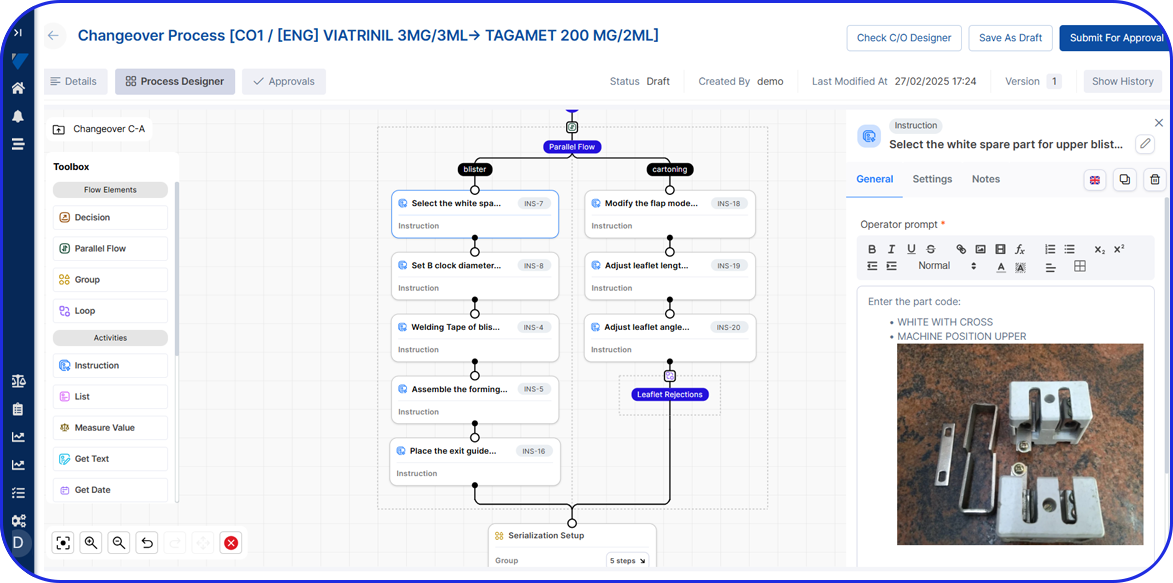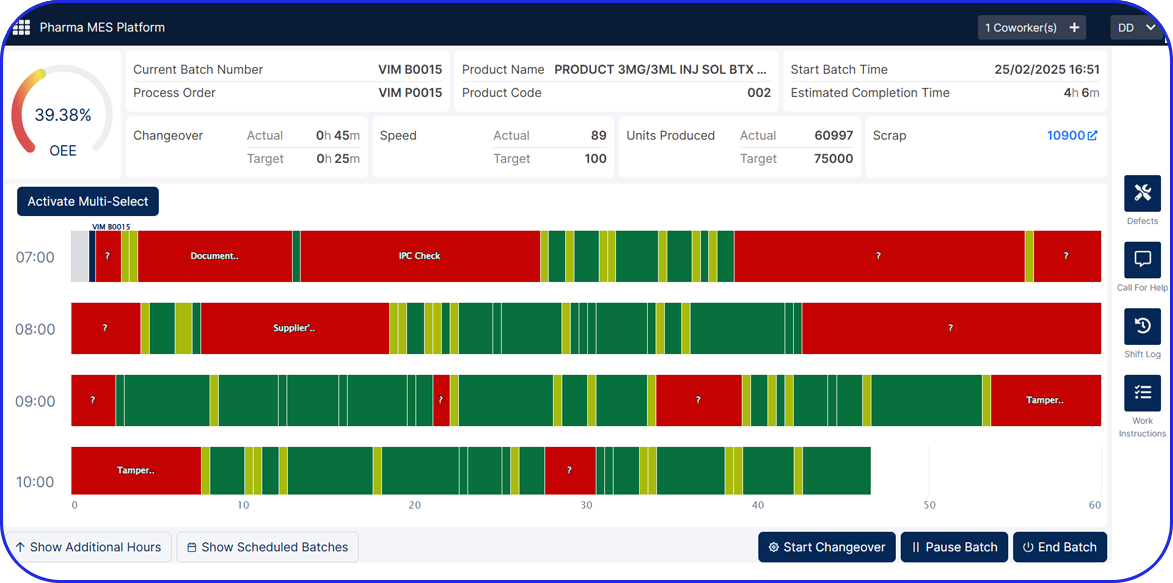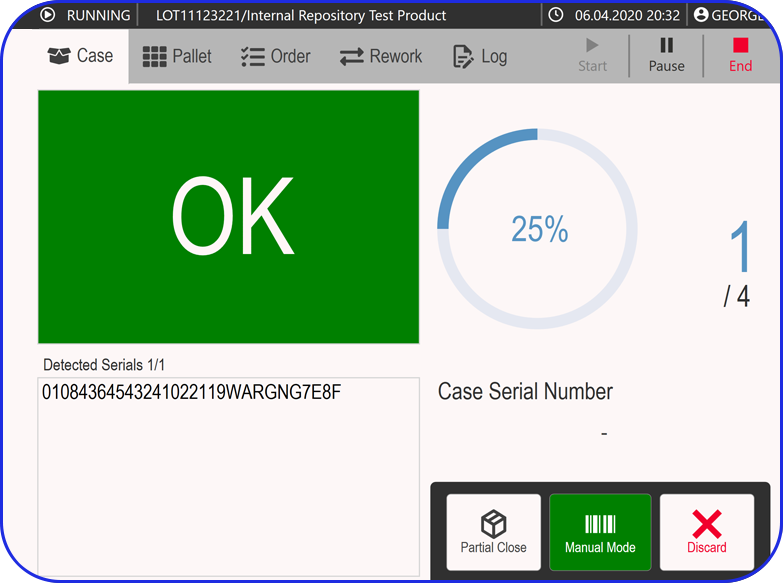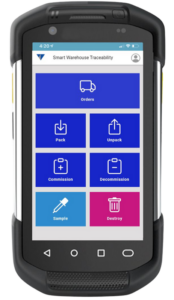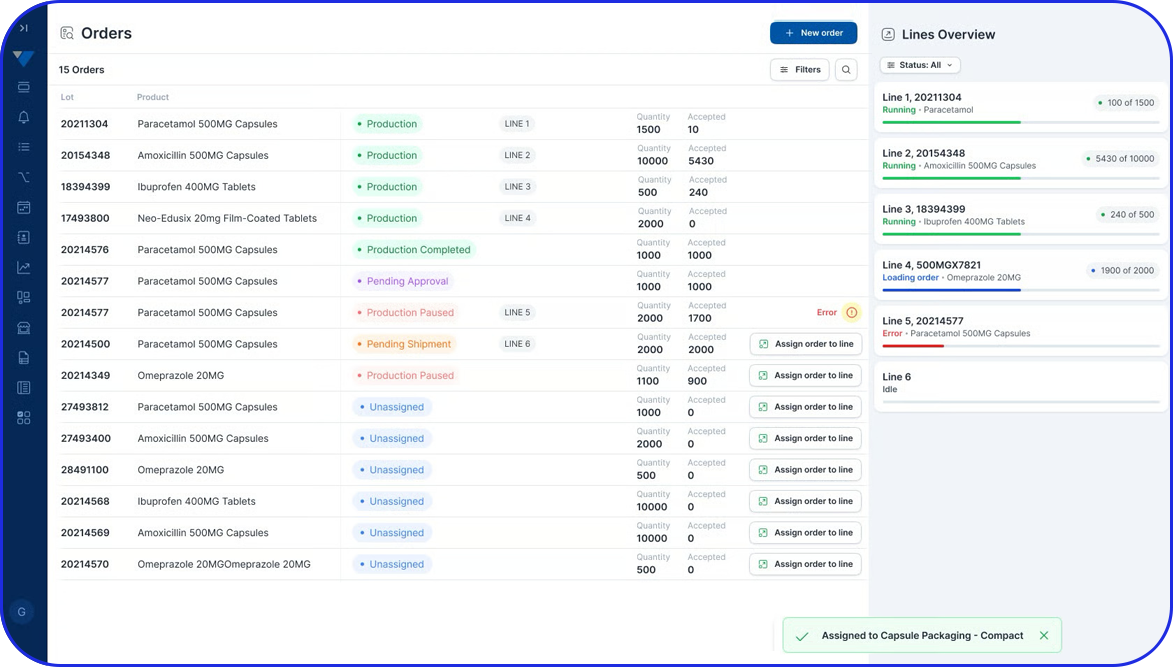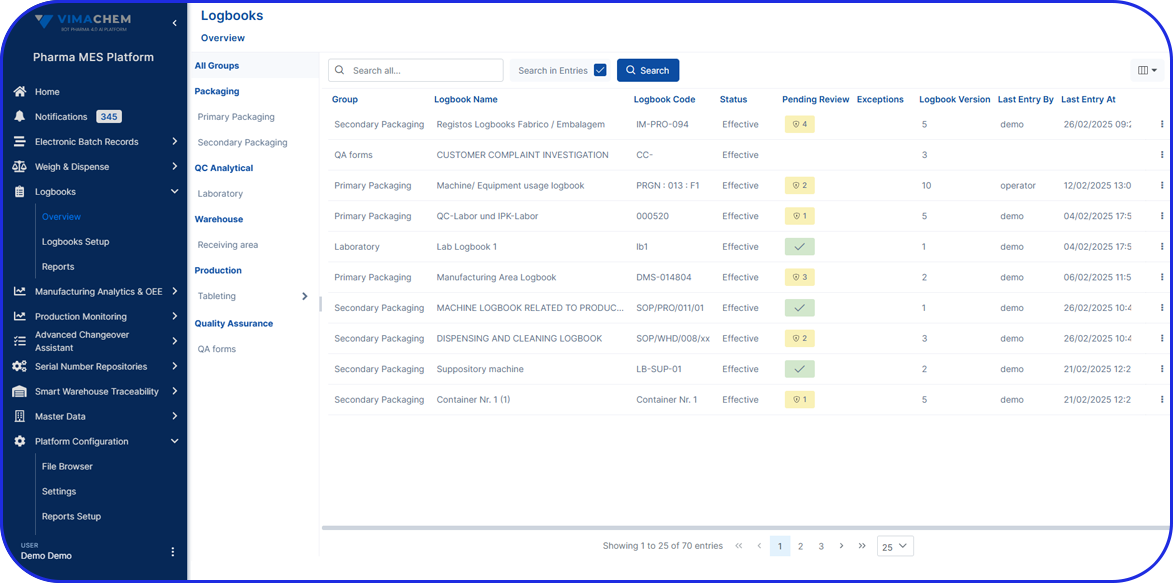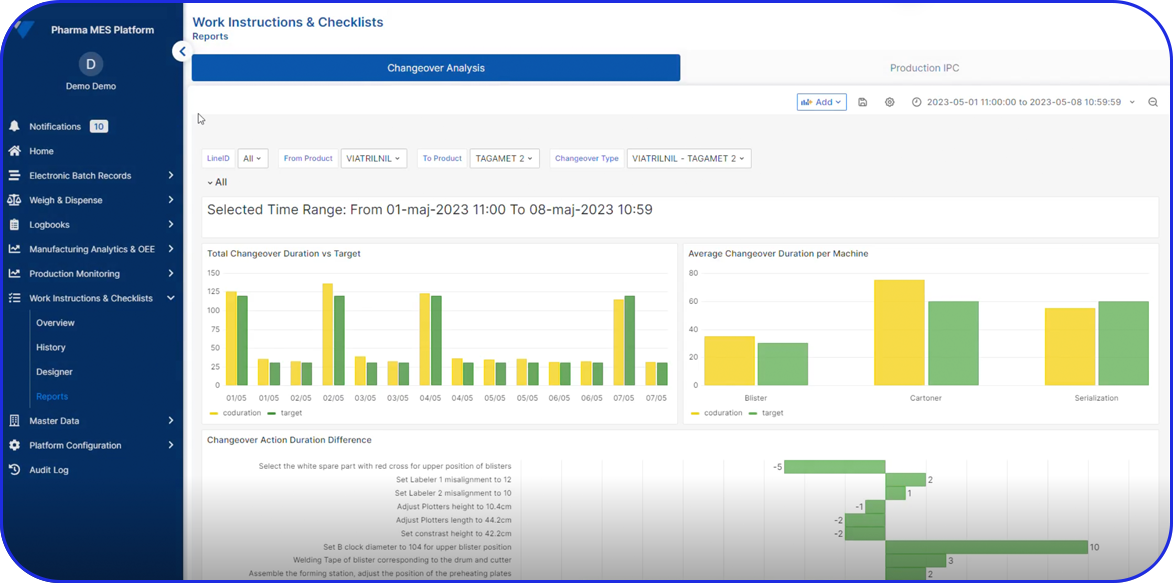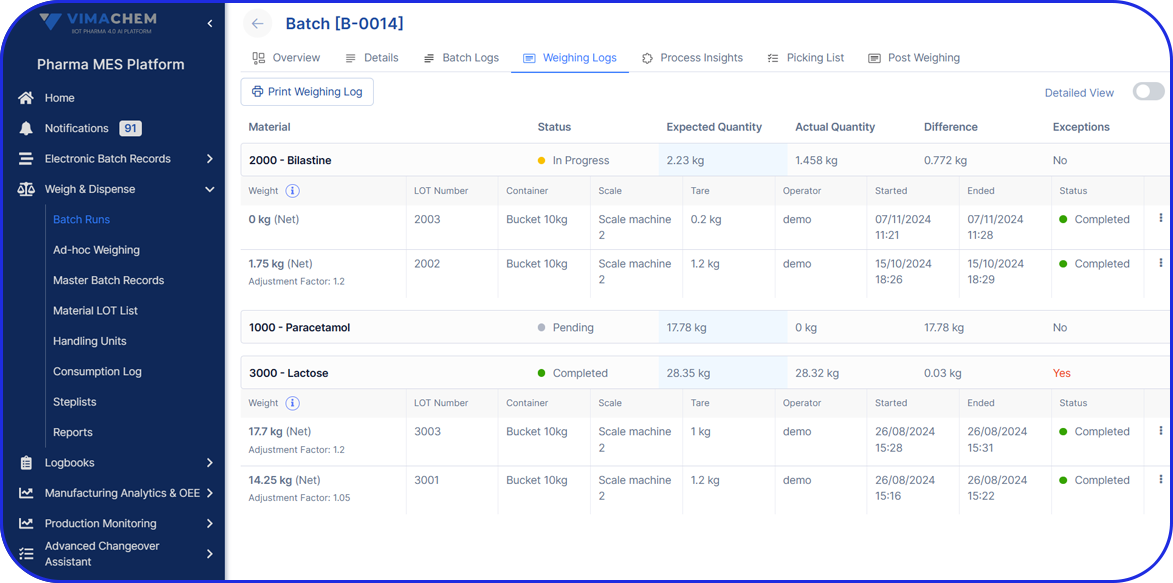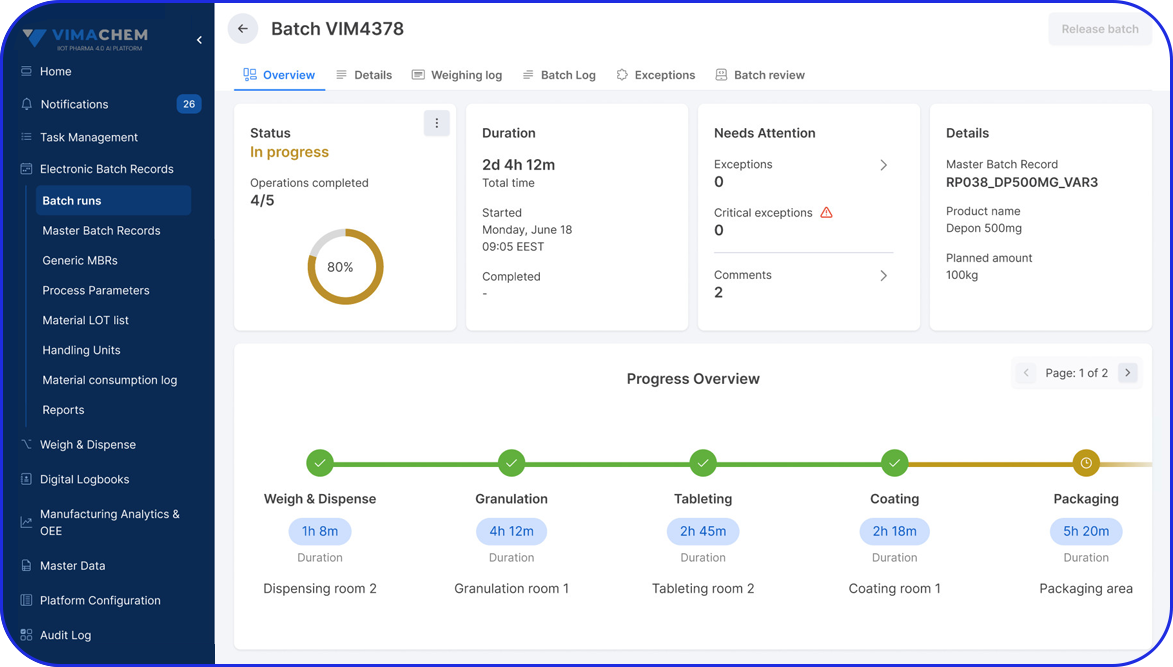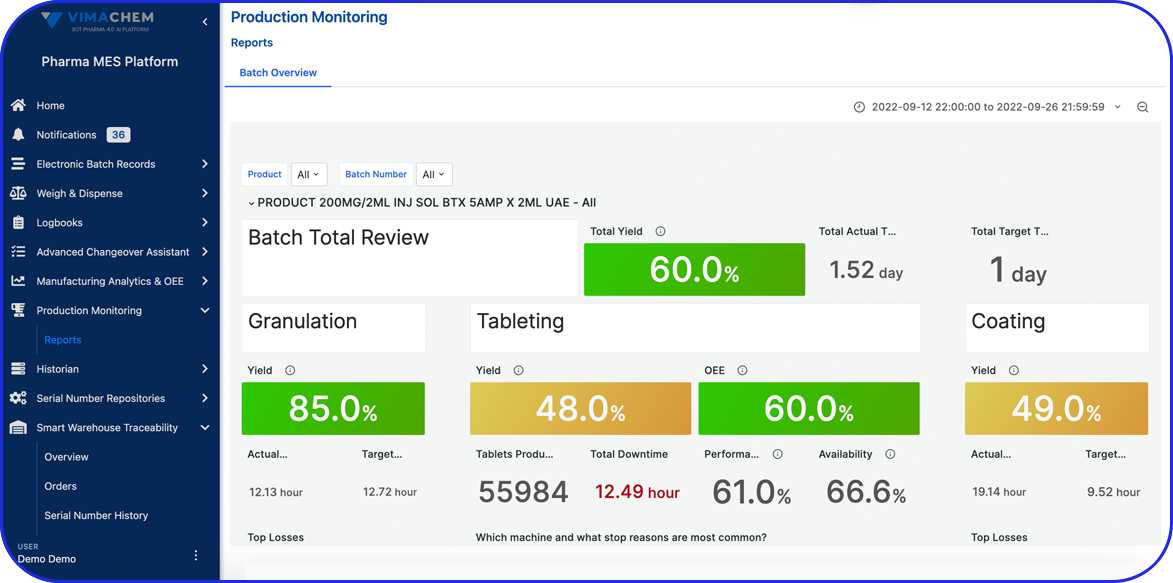OEE Monitoring with Software as a Service (SaaS)
OEE Monitoring with Software as a Service (SaaS)

Ioannis Danias
Continuous Improvement Specialist

What is SaaS for OEE Monitoring?
Monitoring production is crucial to the pharmaceutical manufacturing processes, and Pharma 4.0 has made processes more data-driven and automated than ever before. Using Software as a Service (SaaS) platforms to monitor equipment performance has proven to be critical for digital transformation infrastructure.
SaaS platforms are cloud-based software applications that offer real-time monitoring and analysis of production processes, enabling manufacturers to optimize manufacturing performance and increase overall productivity. This article provides valuable insights and information to assist you in achieving your objectives, whether they are streamlining operations, reducing costs according to Lean Manufacturing Principles, or improving overall efficiency using an OEE (Overall Equipment Effectiveness) SaaS solution.
Benefits of Monitoring Production with SaaS
The benefits of monitoring production are:
A. Real-time monitoring
Real-time monitoring is one of the primary advantages of OEE software for production monitoring. Industrial Internet of Things (IIoT) sensors and analytics tools are utilized by SaaS platforms to provide real-time data and analysis of production processes. This ability allows pharma manufacturers to identify problems as soon as they arise and take corrective action before they become major problems.
B. Data accessibility
collection is stored in the cloud, making it accessible from anywhere and at any time. This allows manufacturers to remotely monitor production processes without being physically present on the shop floor. In addition to enabling manufacturers to make informed decisions regarding production processes, resource allocation and data accessibility facilitates informed decision-making regarding production procedures and resource allocation.
C. Scalability
The scalability of SaaS platforms makes them ideal for use in large manufacturing operations. They can be easily scaled up or down based on business requirements. Monitoring production processes enables manufacturers to utilize SaaS platforms not only when it comes to scalable new functionalities but also geographically, where similar factories across different counties can be benchmarked.
D. Cost-effectiveness
The use of SaaS services for production monitoring is also economical. The subscription-based nature of SaaS platforms means that manufacturers only pay for the services they employ. This eliminates the need for costly investments in hardware and software. SaaS platforms also offer automatic software updates, eliminating the manufacturer’s need to maintain and update their software applications.
E. Enhanced security
How SaaS Enhances Manufacturing Performance
1. Identifying Bottlenecks and Inefficiencies
SaaS platforms enable manufacturers to monitor equipment performance in real time. By analyzing key metrics like downtime, cycle time, and production speed, manufacturers can pinpoint bottlenecks and inefficiencies that affect overall productivity.
2. Reducing Downtime Through Predictive Analytics
SaaS solutions often integrate predictive maintenance capabilities. These platforms analyze historical and real-time data to predict equipment failures, allowing manufacturers to address issues before they lead to costly downtime.
3. Improving Equipment Reliability
With centralized monitoring and detailed insights, SaaS platforms help manufacturers maintain consistent equipment performance. This leads to improved reliability, ensuring that machines operate at optimal efficiency.
4. Enhancing Data-Driven Decision-Making
SaaS platforms provide comprehensive dashboards and reports, making it easier for decision-makers to access actionable insights. By leveraging this data, manufacturers can implement strategic changes to improve processes and increase overall equipment effectiveness (OEE).
5. Fostering Collaboration Across Teams
Cloud-based SaaS platforms enable seamless sharing of data across departments and teams. This transparency fosters collaboration, ensuring that everyone has access to the same information to drive aligned improvements.
6. Enabling Scalability & Flexibility
As manufacturing needs evolve, SaaS platforms offer the flexibility to scale operations, add features, or integrate with new technologies. This ensures that manufacturers can adapt quickly to changing demands and maintain competitive advantage.
Implementing OEE Monitoring Best Practices
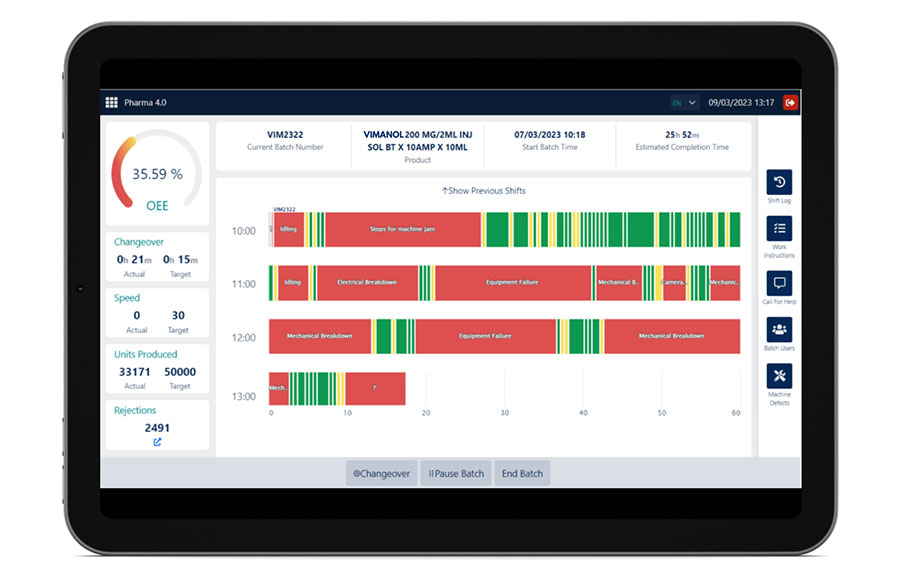
Successfully implementing an OEE monitoring system requires careful planning and a comprehensive understanding of best practices such as:
A. Involving Key Stakeholders
Participation from key stakeholders is essential for the successful implementation of OEE monitoring technology. This includes the involvement of production managers, engineers, and operators, in addition to IT and other technical personnel. You can ensure that the technology meets the needs of the production process and that the implementation is successful by involving key stakeholders.
B. Digital Maturity Assessment
Choosing the right technology to monitor OEE is crucial to the implementation’s success. When selecting a new technology, compatibility with the organization’s existing technological infrastructure, data security, and data management processes should be examined. Additionally, it is essential to select technology that has enhanced scalability to meet future demands and an intuitive interface for the users that provides actionable insights into production performance metrics for the managers.
C. Provide Appropriate Training
Appropriate training is essential to ensure all users can effectively utilize the technology. This includes training on using the technology to make users feel more familiar and less confused when operating the software. It should also teach how to interpret and use the data to avoid misunderstandings and optimize decision-making.
D. Implement Continuous Improvement Programs
Implementing a continuous improvement program is important when it comes to OEE monitoring best practices, as utilizing this data to develop and implement improvements will help optimize equipment and process performance, reduce downtime, and enhance productivity.
The main steps of such an implementation are:
- Establish a clear vision that aligns with the organization’s long-term goals and objectives. Involve all organizational levels, from upper management to front-line workers, so everyone participates in the continuous improvement process.
- Identify improvement opportunities on processes, systems, individual skills, and equipment. Identify areas that can be streamlined, made more efficient, or otherwise upgraded. Next, develop a roadmap for implementing the changes that include specific steps, a timeline, and responsibility allocations. Then, put the plan into action involving modifying processes, systems, or equipment or providing employees with training and development opportunities.
- Monitor and evaluate the outcome of your efforts by utilizing data and employee feedback to track progress and identify additional areas for improvement. Celebrate the accomplishments along the way by rewarding employees who have made substantial contributions to the program and using these accomplishments to motivate future improvement efforts.Implementing a continuous improvement program can be difficult, but it can also yield significant benefits for your organization. You can achieve long-term success by involving all levels of the organization, identifying areas for improvement, developing and implementing a plan, and monitoring and evaluating the results.
E. Establish Key Performance Indicators (KPIs)
Identifying the most pertinent key performance indicators (KPIs) for your production processes is a crucial step implementing an OEE software solution. You should select KPIs based on their applicability to your production processes and their capacity to offer actionable insights into production performance metrics.
Conclusion
The use of SaaS monitoring platforms for improving productivity offers numerous benefits to manufacturers. SaaS monitoring platforms provide real-time monitoring, simple data access, scalability, affordability, and enhanced security. By implementing SaaS monitoring platforms for productivity, users can optimize their manufacturing processes, increase their overall productivity, and remain competitive in the rapidly evolving manufacturing landscape of the present day.
Implementing OEE monitoring technology requires meticulous planning and a comprehensive understanding of industry best practices. Defining key metrics, selecting the appropriate technology, involving key stakeholders, and providing adequate training are crucial for a successful implementation. Implementing a continuous improvement program completes the OEE software deployment by providing the appropriate background to drive the optimizations suggested after analyzing the data.
As a result of a cloud-based OEE software with modular architecture and a SaaS model, the implementation of the Vimachem MA&OEE for pharmaceutical and biotech companies has become faster than ever!
Ready to Augment your Shop Floor Operations?
Ready to Augment your Shop Floor Operations?
Vimachem Manufacturing Analytics - OEE
The Manufacturing Analytics – OEE module is an intelligent Pharma OEE Cloud solution that allows you to collect, store and visualize data across your site / enterprise and apply AI algorithms to optimize production efficiency and product quality.

